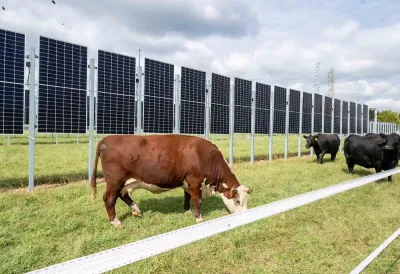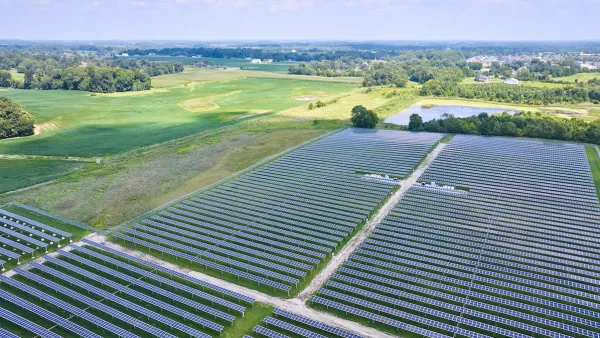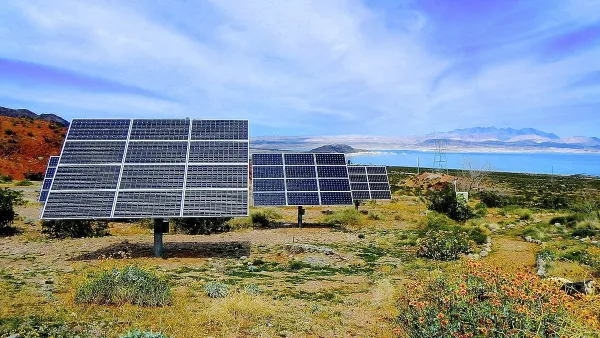A Rutgers University-New Brunswick demonstration farm will evaluate solar array designs to understand how they can best support grazing and agriculture on the same site.

A new research and demonstration project at Rutgers University-New Brunswick combining solar energy production with livestock grazing could help researchers understand how the design of solar installations can facilitate agriculture and ranching on the same sites to prevent the loss of productive farmland to solar farms.
As Kitta MacPherson explains in a Rutgers press release, “The installation on College Farm Road on the George H. Cook campus will allow researchers to investigate how the design affects grazing strategies for beef cattle and ease of hay harvesting. Scientists also will assess whether certain crops fare better in New Jersey’s climate using an agrivoltaics system, compared with crops produced in other regions of the United States employing agrivoltaics.”
Unlike many solar arrays, the Rutgers installation spaces panels far enough apart to let grass grow between rows and provide enough space for cows to graze. According to Rutgers Agrivoltaic Program Lead David Specca, “Our approach emphasizes food production and considers the generated electricity as a low-risk and supplemental income for farmers.” The project could help New Jersey get closer to reaching its renewable energy goals while preserving farmland.
Earlier this year, Ohio state officials gave the go-ahead to a 6,000-acre agrivoltaic project that will combine solar energy production with sheep ranching and agriculture.
FULL STORY: Cows and Solar Panels? In a New Jersey First, Project Melds Farming With Electricity Generation

National Parks Layoffs Will Cause Communities to Lose Billions
Thousands of essential park workers were laid off this week, just before the busy spring break season.

Retro-silient?: America’s First “Eco-burb,” The Woodlands Turns 50
A master-planned community north of Houston offers lessons on green infrastructure and resilient design, but falls short of its founder’s lofty affordability and walkability goals.

Delivering for America Plan Will Downgrade Mail Service in at Least 49.5 Percent of Zip Codes
Republican and Democrat lawmakers criticize the plan for its disproportionate negative impact on rural communities.

Test News Post 1
This is a summary

Test News Headline 46
Test for the image on the front page.

Balancing Bombs and Butterflies: How the National Guard Protects a Rare Species
The National Guard at Fort Indiantown Gap uses GIS technology and land management strategies to balance military training with conservation efforts, ensuring the survival of the rare eastern regal fritillary butterfly.
Urban Design for Planners 1: Software Tools
This six-course series explores essential urban design concepts using open source software and equips planners with the tools they need to participate fully in the urban design process.
Planning for Universal Design
Learn the tools for implementing Universal Design in planning regulations.
EMC Planning Group, Inc.
Planetizen
Planetizen
Mpact (formerly Rail~Volution)
Great Falls Development Authority, Inc.
HUDs Office of Policy Development and Research
NYU Wagner Graduate School of Public Service





























